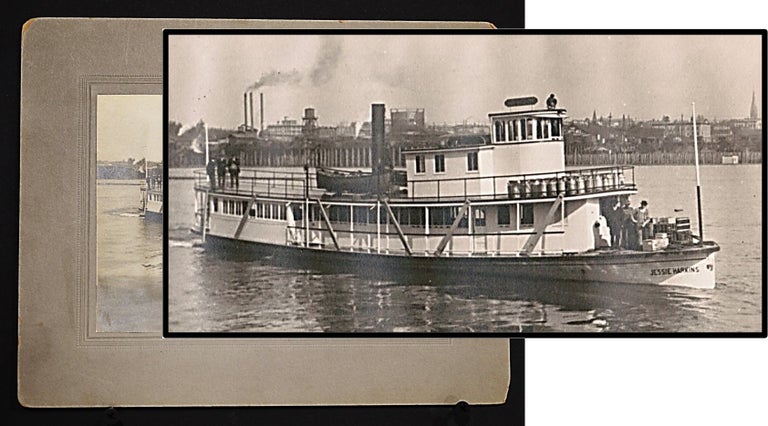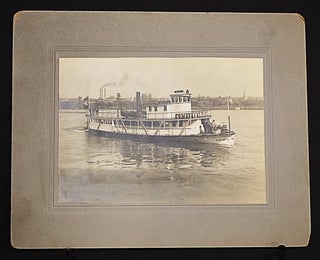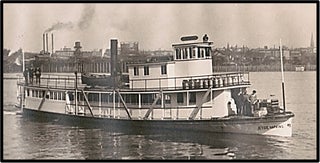Early 20th Century Original Photograph of Steam Ship Jessie Harkins which operated on the Columbia River, Oregon
Mounted on binder's board with stamped matte-border, Photo is in fine condition with board corners bumped and a bit rounded. Matte measures 10 by 8 inches the actual photo is 7 by 5 inches. Modest and expected age-toning.
Many steamboats operated on the Columbia River and its tributaries, in the Pacific Northwest region of North America, beginning about 1850.
Major tributaries of the Columbia that formed steamboat routes included the Willamette and Snake rivers.
The paddle-wheel steamboat has been described as an economic "invasion craft" which allowed the rapid exploitation of the Oregon Country.
Very Good / Matted. Item #013838
Brief History of the Jessie Harkins
The Jessie Harkins was a propeller-driven steamboat that operated on the Columbia River starting in 1903. It was rebuilt at least twice. Originally Jessie Harkins was one of the larger gasoline-engined vessels.
Jessie Harkins was built at the Portland Shipbuilding Company for Captain Hosford and launched on November 18, 1903. Jessie Harkins was powered by a 45 horsepower gasoline engine, and was one of the largest of these types of vessels to be launched on the Columbia River.
Jessie Harkins was built for the run between Vancouver and Washougal, Washington. It was not intended to carry freight or baggage, but passengers only, and running on day trips only, it had no overnight passenger accommodations. Passenger capacity was about 100 for every trip.
Jessie Harkins was 72 ft (21.95 m) long and had beam of 13.5 ft (4.11 m).
In 1905, Jessie Harkins was converted was somewhat enlarged, and converted from gasoline to steam engine power.
In 1909, Jessie Harkins was again reconstructed and the components were used to build two new vessels. The cabin structure (called the "house") of the original vessel was removed, and installed on a newly built hull. This boat kept the name Jessie Harkins, but was assigned a new official merchant vessel identification number, 206018, This new boat was larger than the one built in 1903.
The old hull from the 1903 boat was sold to another company, which built a new cabin structure on the hull, and operated the boat for about six months in 1909 under the name Butterfly. Butterfly somewhat confusingly kept the original merchant vessel identification number as the 1903 Jessie Harkins, which was 200443.
The numerous small craft like Jessie Harkins that operated on the Columbia and the Willamette Rivers were sometimes referred to as the 'mosquito fleet'.
In 1920 Harkins Transportation Co. sold Jessie Harkins to the Shaver Transportation Company, which renamed the boat Pearl. In 1925, Shaver Transportation Co. converted Pearl to diesel power. Shaver Transportation operated Pearl for a long time as a towboat, eventually dismantling it in the 1950s.
Ref: wiki, Pacific Marine Review, Volume 15
Price: $45.00








